MG75J1BS11 Module: Features and Applications
2025-04-04
94
Catalog

MG75J1BS11 Equivalent Circuit

The image shows the equivalent circuit diagram of the MG75J1BS11, which is an IGBT (Insulated Gate Bipolar Transistor) module. This diagram simplifies the internal structure to help understand how the device functions electrically.
In this circuit, the G (B) terminal represents the gate or base of the IGBT, which controls the switching of the device. The C terminal is the collector, and the E is the emitter. The IGBT operates like a switch: when a voltage is applied to the gate, it allows current to flow from the collector to the emitter.
Overview of MG75J1BS11
The MG75J1BS11, a high-power IGBT (Insulated Gate Bipolar Transistor) module from Toshiba, stands out for its capability to manage significant voltages and currents, essential in high-power applications such as motor control and power inverters. Designed for efficient power amplification and switching, it ensures that energy losses during operations are minimized, boosting overall efficiency and reliability. The unique composite structure of the MG75J1BS11 melds the advantages of bipolar and field-effect transistor technologies, allowing for high voltage handling, rapid switching, and superior efficiency.
If you're looking to boost the efficiency and reliability of your systems, the MG75J1BS11 is your go-to solution, blending advanced technology with dependable performance. Place your bulk orders today to take full advantage of these benefits in your applications.
MG75J1BS11 Technical Information


Uses of MG75J1BS11
Motor Control Systems
The MG75J1BS11 is widely used in motor control systems, particularly for driving high-power electric motors in industrial and automotive applications. Its ability to handle high currents and voltages with efficiency makes it ideal for applications ranging from electric vehicle drivetrains to industrial automation equipment.
Power Inverters
This IGBT module is essential in power inverter systems, such as those used in solar inverters or uninterruptible power supplies (UPS). Its fast switching capabilities and high power efficiency are crucial for converting DC to AC power while minimizing energy loss.
Renewable Energy Systems
In renewable energy applications, such as wind turbines and solar panels, the MG75J1BS11 helps manage and convert the variable power output into a stable and usable form of electricity. Its robustness and reliability support the effectiveness of power generation systems in fluctuating environmental conditions.
Traction Systems
Used in electric rail traction systems, the MG75J1BS11 contributes to the efficient and effective control of train motors. It supports the high-power requirements and dynamic loads typical in traction applications, enhancing performance and energy efficiency.
High-Power Industrial Applications
The module is also applicable in various high-power industrial applications, including heating systems and large-scale manufacturing machinery. It can efficiently manage the high power levels required for heating elements and motor drives in these settings.
MG75J1BS11 Characteristic Curves

The characteristic curves of the MG75J1BS11 IGBT module from Toshiba provide valuable insights into how the device behaves under various electrical conditions. These graphs help engineers understand the relationship between voltage, current, temperature, and gate drive requirements.
In the top-left graph (Ic–Vce), the collector current (Ic) is plotted against the collector-emitter voltage (Vce) for different gate-emitter voltages (Vge) at 25°C. As Vge increases, the IGBT allows higher current to flow with lower voltage drop, showing the efficiency of the device when fully turned on.
The remaining three graphs (Vce–Vge) show how the collector-emitter saturation voltage (Vce(sat)) varies with the gate-emitter voltage (Vge) for a fixed collector current (Ic = 30A) at three different case temperatures: -40°C, 25°C, and 125°C. These curves indicate how temperature affects the device’s on-state behavior. At higher temperatures, Vce(sat) increases, implying higher conduction losses, which is a key factor in thermal design.
Main Features of MG75J1BS11
High Voltage and Current Capability
The MG75J1BS11 is designed to handle high voltage and current, making it suitable for demanding applications that require robust power-handling capabilities, such as industrial motor drives and renewable energy converters.
Low On-State Voltage
This IGBT module offers a low on-state voltage, which reduces conduction losses and improves overall efficiency in power conversion systems. This feature is crucial for applications where energy efficiency is a priority.
Fast Switching Speed
The MG75J1BS11 is capable of fast switching speeds, which minimizes switching losses and allows for higher frequency operation. This is beneficial in applications like switch-mode power supplies and frequency converters.
High Thermal Durability
Equipped with a robust thermal management design, the MG75J1BS11 can operate efficiently at higher temperatures, which enhances reliability and longevity in harsh environmental conditions.
Gate-Emitter Voltage Ratings
It supports a wide range of gate-emitter voltages, providing flexibility in different circuit designs and ensuring compatibility with various drive systems used in electronic equipment.
Built-In Protection Features
The module includes built-in protection features such as overcurrent protection and short-circuit protection, enhancing safety and reliability during operation.
Recommended Gate Drive Circuit for MG75J1BS11
Use of an Isolated Gate Driver
For the MG75J1BS11, it is crucial to use an isolated gate driver to ensure that the gate control signals are protected from the high voltages typically found in the circuits where this IGBT is used. Isolation helps prevent electrical noise and disturbances from affecting the gate control.
Gate Resistor Implementation
Integrating gate resistors in the drive circuit helps in controlling the switching characteristics and reducing ringing effects, which can lead to electromagnetic interference (EMI) and potential device failure. The value of the gate resistor may need to be adjusted based on the specific application requirements to optimize the switching speed and minimize losses.
Bootstrap Diode and Capacitor
If using a high-side driver, a bootstrap circuit comprising a diode and capacitor should be implemented. This circuit helps in providing the necessary gate voltage higher than the supply voltage, which is essential for proper high-side operation.
Decoupling Capacitors
Placing decoupling capacitors close to the power terminals of the IGBT can help stabilize the power supply and reduce voltage spikes caused by rapid current changes during switching. This arrangement improves the overall performance and longevity of the IGBT.
Protective Clamping
Incorporating clamping circuits to protect against over-voltage can be very beneficial. These circuits typically involve the use of transient-voltage-suppression (TVS) diodes or varistors that clamp high-voltage spikes to safe levels, protecting the gate oxide of the IGBT.
Adequate Heat Sinking
Since gate drivers can generate heat during operation, especially at high switching frequencies, ensuring adequate heat sinking is crucial to maintaining the stability and reliability of the gate drive circuit.
MG75J1BS11 Storage Guidelines
Temperature and Humidity Control
Ensure the storage environment maintains a temperature range of -40°C to +100°C. Humidity levels should be kept below 60% RH to prevent moisture accumulation that can lead to oxidation and other moisture-related damage.
Static Electricity Protection
The MG75J1BS11 should be stored in anti-static packaging to prevent damage from electrostatic discharge (ESD). Use conductive or anti-static foam to cushion the modules and avoid handling them directly with your hands without proper grounding.
Mechanical Protection
Avoid mechanical stress and ensure the modules are not subjected to pressure, impact, or excessive force during storage. Stack the boxes or containers carefully in a manner that does not put stress on the modules inside.
Shelf Life and Rotation
Monitor the shelf life of the stored IGBT modules. Implement a first-in, first-out (FIFO) system to use the oldest modules first and prevent prolonged storage, which could degrade performance over time.
Chemical Exposure
Store the modules away from harmful chemicals, such as strong acids or bases, and solvents that can corrode metal parts or degrade plastic enclosures.
Light Exposure
Avoid prolonged exposure to sunlight or strong ultraviolet (UV) light, which can deteriorate the materials used in the IGBT modules.
MG75J1BS11 Alternative Options
Manufacturer Information
Toshiba, while known for its extensive range of electronic components and materials, does not manufacture the IRG4PC50UD; this specific IGBT is produced by Infineon Technologies. If Toshiba were to develop a product like the IRG4PC50UD, they would leverage their advanced semiconductor facilities and experience in power electronics to ensure high efficiency and reliability.
Packaging Information

The outline drawing provides key mechanical dimensions for proper mounting and integration. The module measures approximately 53.0 mm in width, 34.6 mm in depth, and 27 mm in height, with mounting hole spacing clearly defined for easy panel or heat sink attachment. Three M4 screw terminals are positioned on the top surface and are labeled B (Base/Gate), C (Collector), and E (Emitter)—corresponding directly to the device’s internal IGBT structure. These terminals ensure strong electrical contact and reliable current flow.
Conclusion
In this article, we explored the MG75J1BS11 IGBT module, emphasizing its ability to manage high power safely and efficiently. With features like fast switching and high thermal durability, it's a key component in various demanding applications. The MG75J1BS11 can significantly improve your range and meet the needs of clients looking for reliable, high-performance parts. Consider stocking up on this module to enhance your offerings in the electronics market.
Datasheet PDF
MG75J1BS11 Datasheet:
 關於我們
每次客戶滿意度。相互信任和共同利益。
關於我們
每次客戶滿意度。相互信任和共同利益。
功能測試。最高成本效益的產品和最好的服務是我們永恆的承諾。
 6DI75A-050數據表摘要:功能,尺寸和替代方案
6DI75A-050數據表摘要:功能,尺寸和替代方案
2025-04-04
 探索TDB6HK180N16RR:規格和使用
探索TDB6HK180N16RR:規格和使用
2025-04-03
常見問題 [FAQ]
1. What voltage is needed for the MG75J1BS11 to work best?
The MG75J1BS11 operates best within a gate-emitter voltage range of about 15V to 20V, ensuring efficient switching and minimizing damage risks.
2. Can the MG75J1BS11 be used in medical or aerospace equipment?
Due to its high power capacity and reliability, the MG75J1BS11 is suitable for high-power medical and aerospace equipment. It's important to check that it meets specific safety standards for these industries.
3. What issues might arise if the MG75J1BS11 is used at very high frequencies?
Using the MG75J1BS11 at very high frequencies can lead to increased switching losses and potential overheating. It's vital to manage power dissipation and have good cooling systems in place.
4. What regular maintenance should systems using the MG75J1BS11 have?
Systems should regularly check for thermal stress signs, ensure correct gate drive signals, and verify that cooling systems are working well. Electrical performance tests are recommended to spot any early signs of wear or failure.
5. How does the overcurrent protection in the MG75J1BS11 work?
The overcurrent protection detects excessive current flow and turns off the IGBT to prevent damage. This is essential for avoiding serious failures in high-power applications.
熱門零件編號
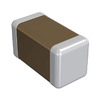 GRM1555C1H181JA01J
GRM1555C1H181JA01J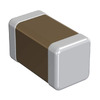 GRM0225C1E7R0WDAEL
GRM0225C1E7R0WDAEL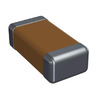 12066D226MAT2A
12066D226MAT2A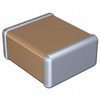 C5750X7T2E155M200KA
C5750X7T2E155M200KA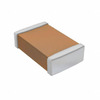 CL21C820JBANNNL
CL21C820JBANNNL GCD188R71E473KA01D
GCD188R71E473KA01D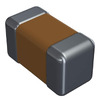 02013A2R7CAQ2A
02013A2R7CAQ2A T521D336M035ATE065
T521D336M035ATE065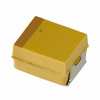 TLNS227M004R3000
TLNS227M004R3000 T494B475K010AH
T494B475K010AH
- FP0805R1-R07-R
- MPC745BPX300LE
- MAX4053ESE+T
- VI-J51-IW
- R5S72680W266FP#V0
- MPC8569ECVJAQLJB
- DG406DN-E3
- SY100EL16VKC
- SC4808AIMSTRT
- HIP6311ACB
- LXML-PR01-0500
- V48C5M50AL
- VI-26L-04
- VI-J52-05
- VI-JOY-EX
- TPS40071PWPR
- ADL5801ACPZ-R7
- OPA374AID
- T495A105K025ZTE5K0
- T491D226K020ZTAU00
- ADUM141D1BRZ
- DAC5662IPFBG4
- BAL-CW1250D3
- LF50CDT
- LM2990T-5.0
- UCC2894PW
- FC1610-TC-AL
- FSTU32160AMTD
- ISPLSI5384VA
- LTC1419ACG
- M29F400FB5AN6
- TD62003AF-TP2
- TMC51F-G
- CM800DX-24T1
- CY7C131-15NC
- FAN77317BMX
- UPD800449F1-522
- MPC951FA
- D70F3423GJ